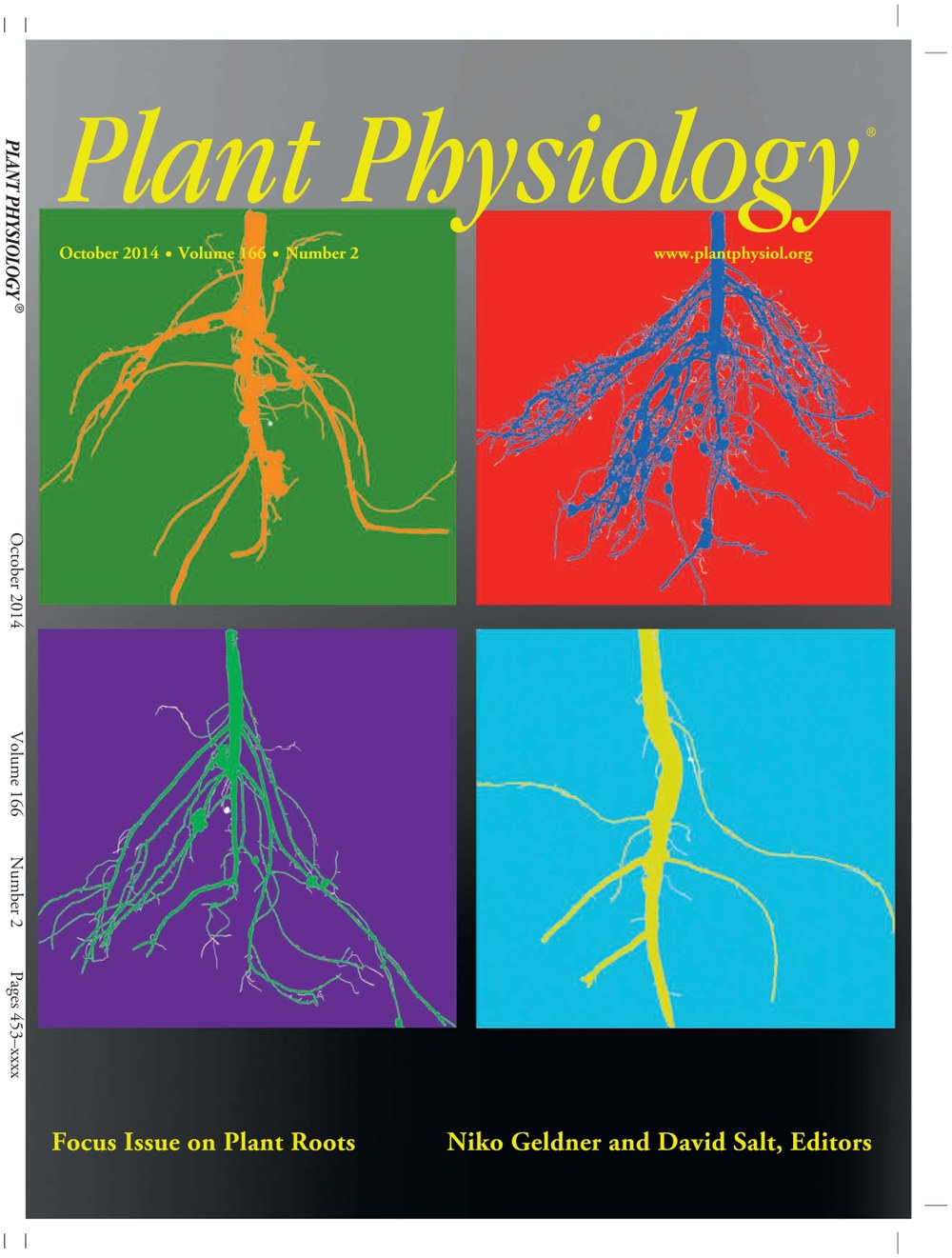
Plant Physiology cover, October 2014
Authors
Bucksch A, J Burridge, LM York, A Das, E Nord, JS Weitz, JP Lynch
Source
Plant Physiology (2014), http://dx.doi.org/10.1104/pp.114.243519
Cover image, Plant Physiology, Oct 2014
Download Options
Full Text: link
Abstract
Current plant phenotyping technologies to characterize agriculturally relevant traits have been primarily developed for use in laboratory and/or greenhouse conditions. In the case of root architectural traits, this limits phenotyping efforts, largely, to young plants grown in specialized containers and growth media. Hence, novel approaches are required to characterize mature root systems of older plants grown under actual soil conditions in the field. Imaging methods able to address the challenges associated with characterizing mature root systems are rare due, in part, to the greater complexity of mature root systems, including the larger size, overlap and diversity of root components. Our imaging solution combines a field imaging protocol and algorithmic approach to analyze mature root systems grown in the field. Via two case studies, we demonstrate how image analysis can be utilized to estimate localized root traits that reliably capture heritable architectural diversity as well as environmentally induced architectural variation of both monocot and dicot plants. In the first study we show that our algorithms and traits (including 13 novel traits inaccessible to manual estimation) can differentiate nine maize genotypes 8 weeks after planting. The second study focuses on a diversity panel of 188 cowpea genotypes to identify which traits are sufficient to differentiate genotypes even when comparing plants whose harvesting date differs up to 14 days. Overall, we find that automatically derived traits can increase both the speed and reproducibility of the trait-estimation pipeline under field conditions.

